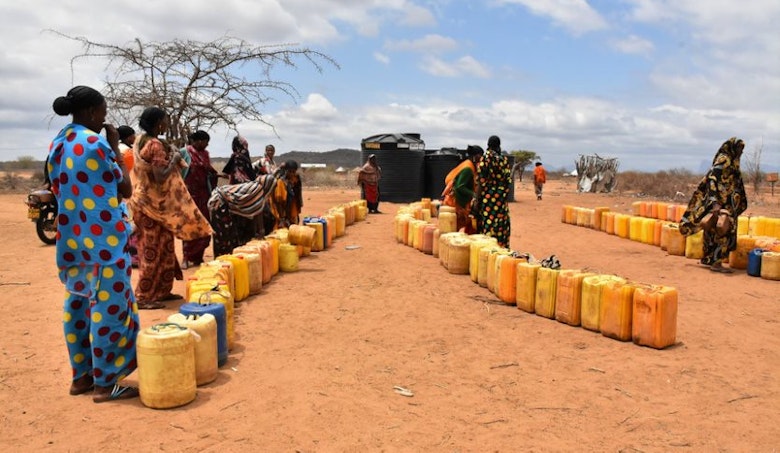Assessment report: Impact of drought on children in Moyale subcounty in Marsabit,Kenya
In June 2022, we conducted an assessment on the impact of drought on children to determine the extent to which drought has affected children, establish the coping mechanisms, identify gaps in response, possible hidden child exploitation, and recommendations.
Overview
Terre des Hommes Netherlands in partnership with Strategies for Northern Development (SND) with financial support from Terre des Hommes Germany, is implementing an emergency intervention to prevent and respond to child exploitation during the ongoing drought emergency in Moyale Sub County. To inform targeted delivery, the project sought to conduct a situation analysis of children in drought-affected areas of Moyale Sub County, with a focus on child exploitation. The assessment of the impact of drought on children was conducted in a participatory manner using both quantitative and qualitative techniques.
Key findings
The assessment revealed that drought is a reality in Moyale Sub County, children, and women were found to be the most vulnerable and therefore are more prone to being exposed to abuse. Drought in this sub-county has led to a decrease in people’s access to improved water sources, which has led to an increased risk of diseases, which has an effect on their health and hygiene practices.
Drought has long-term effects on children since it deprives them of the realisation of their rights and future development. The assessment notes that parents engage in more activities away from home, like far-off grazing fields, and long distances searching for water and food; children suffer the consequences as they are left to care for themselves and the household duties.The loss of livelihoods and incomes pushed children out of school and led to school dropouts, child marriages, child labor, and forced marriages.
From the assessment, the communities practise negative coping mechanisms during drought sessions and this affects their general livelihoods. For example, children who are put to work to supplement family income are exposed to child labour; the marriage of the children in exchange of materials for family use; this draws the children from school, exposing them to exploitation and related health complications.
Key conclusions and recommendations
Some of the conclusions and recommendations derived from the assessment include;
- Drought has an impact on children, and this requires a child-centric intervention through the caregivers, the schools, and the community.
- Food insecurity brought about by drought affects the entire sub-county but is severe in the Golbo ward. There is a need to support the children through cash transfer programs, food distribution, and school feeding programs.
- The community depends on livestock as their source of income and livelihood, butthis has been adversely affected by drought. There is a need to support alternative livelihoods, microenterprises, and agro-pastoralist ventures.
- The sub-county has no early warning signs or drought risk mitigation strategies.
- There is a need to strengthen and actively promote participatory risk mitigation mechanisms to help communities diversify their livelihood sources and develop adaptive environmental conditions in drought response.
- The data available lacks child-specific issues on the impact of drought. There is an opportunity to work with NDMA to integrate children’s issues into work plans and provide child disaggregated analysis.
- Address children's issues through policy, budgets, and programs such as school feeding programs in all primary schools, supplementary nutrition programs for ECDs, and the concept of kitchen gardening.
- Access and retention of children in schools require a multifaceted approach. There is a need to consistently advocate against this issue by creating awareness, supporting scholarship programs, and providing cash transfers to needy households.
- Water insecurity is a real problem during drought in the sub-county. There is a need to harness traditional community-based water management practices. Regular maintenance and participatory development would help in rejuvenating the culture of community-led natural resource management.
- There are a number of actors working to mitigate the effects of drought in the community, but the level of coordination is weak. There is a need to facilitate partnership building and reinforcement with different stakeholders that deal with drought, both between the government and NGOs and CBOs and within the different line-ministries of the government.
- Promote food security programs that are inclusive and accessible to marginalized populations, and consider the different nutritional requirements of children, pregnant and lactating women, the elderly, and individuals with medical conditions.
Download the assessment report to learn more about the key findings and recommendations.

